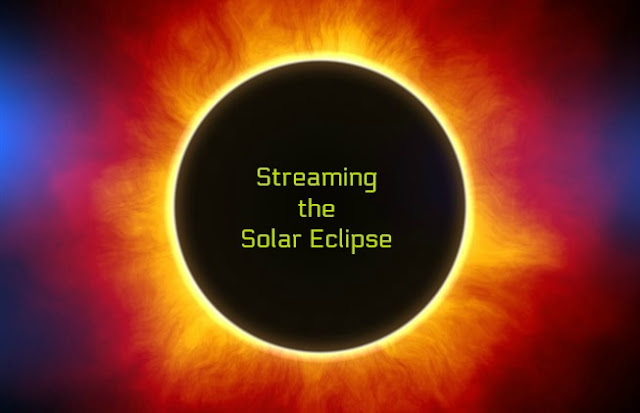Natural phenomenons can be a wonder to behold. Especially remarkable ones like the total eclipse of the sun that is taking place on Monday, August 21st. The last time this occurrence was visible from the United States I was just six years old. So a total solar eclipse is obviously a rare sight that you don't want to miss out on if you can witness one.
For those people who don't have the special glasses to gaze directly at the event, may be stuck inside for work or other obligations, or the weather isn't cooperating with cloudy skies don't fret. Live video of the event is going to be broadcast from a variety of sources. Here are a few options to stream coverage of the solar eclipse to your television, computer or mobile device:
NASA
The National Aeronautics and Space Administration will be providing numerous perspectives of the solar eclipse from unique vantage points including the International Space Station, NASA aircraft, astronomical observatories across the United States and more than 50 high-altitude balloons. The NASA TV Public Channel is streaming TOTAL ECLIPSE programming online throughout the phenomenon. Alternate streaming feeds that will have live coverage and commentary from NASA include Facebook Live, Twitch TV, Ustream, and YouTube. The TOTAL ECLIPSE coverage will feature expert commentary from astronomers, academics, astronauts and scientists in addition to what promise to be some spectacular visual images. NASA will also be providing a live raw video feed without any commentary for those who just want to enjoy viewing the solar eclipse.
THE EXPLORATORIUM
The Exploratorium, a science learning laboratory and museum in San Francisco, is hosting 5 live feeds of the solar eclipse. They will be available to watch through the organization's free Total Solar Eclipse App or its web page. The video being streamed will include (1) telescope imagery from Casper, Wyoming, (2) telescope views from Madras, Oregon, (3) a one-hour educational eclipse program with scientific experts from Explorium and NASA in English (4) the educational program also broadcast in Spanish, and (5) a live musical perfomance by Kronos Quartet.
SLOOH
This streaming service focuses on working with observatories around the world in sharing the imagery of astronomical events with each other and the public. Slooh does a nice job of supplementing the visuals component of their broadcasts with commentary by experts who explain things in a manner relatable to the average person. You do need to sign up for a free account to access Slooh's broadcast but covering these type of events is their cup of tea so they are well worth checking out. You can also watch Slooh's webcast without registering for an account by viewing their video feed on space.com.
STREAM.LIVE
Working in partnership with NASA, Stream's coverage will focus on footage from the high-altitude balloons being launched throughout the United States within the eclipses path of totality (where the moon will completely obstruct the sun). Visitors to eclipse.stream.live will have the option of the video feed from specific balloons via an online interactive map feature.
WESTERN SOL
Here's an entertaining way to watch the eclipse. A film maker is shooting a Western movie with the solar eclipse as part of the plot and viewers can watch it all unfold live on Facebook. Western Sol will begin around 12:25 ET and if all goes well you'll be able to witness the real eclipse live within this fictional story about a rancher who is force to rob a bank.
Remember, if you are going out to watch the eclipse outside even though it is shaded by the moon looking directly at the sun is dangerous for your eyes. Don't gaze at this celestial event without the proper safety gear covering your eyes. Watching one of these streaming channels may thus be your best option for enjoying this moment in time if you don't have the recommended NASA-approved safety glasses on hand.


No comments:
Post a Comment